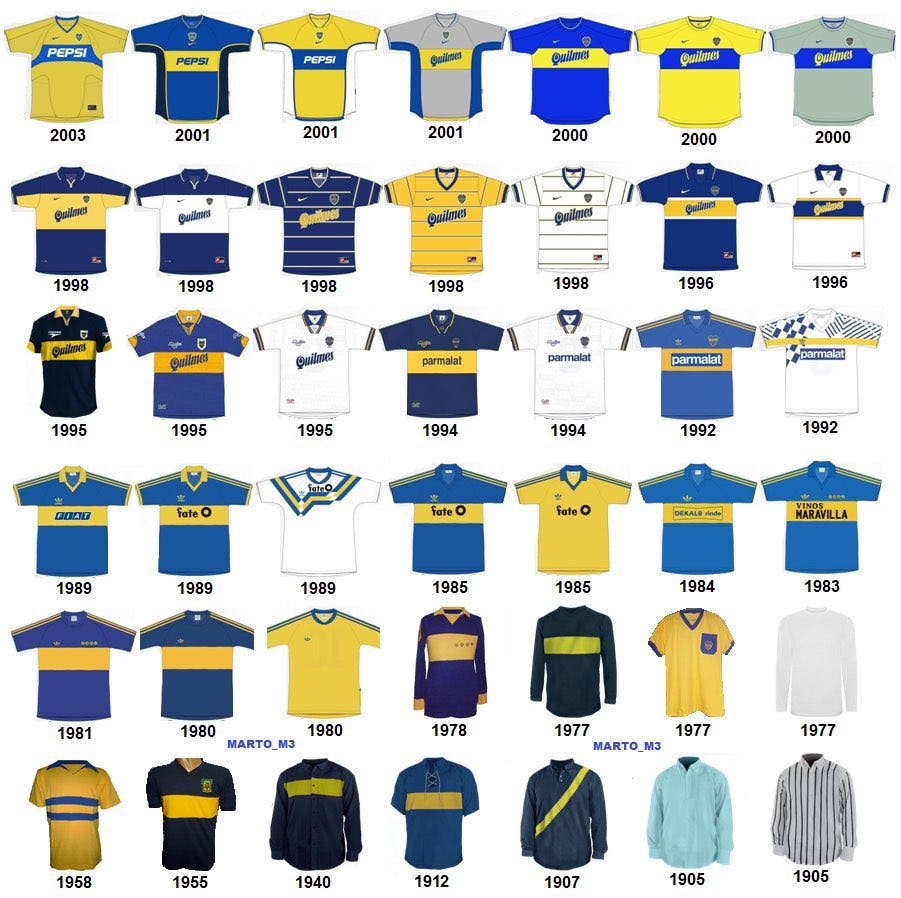Boca Juniors' Founding Story as Club Marks 120 Years
The history of Boca Juniors began on April 3, 1905, when a group of young sons of workers from the La Boca neighborhood decided to create nothing less than a football club.
As if it were child's play, the dream became an attainable reality.
The meeting point was the legendary Plaza Solís, where Juan and Teodoro Farenga, Santiago Sana, Alfredo Scarpatti, Esteban Baglietto, and Luis De Harenne— all descendants of Genoese immigrants— gathered. That day, without knowing it, they were giving birth to one of the most important institutions in world football.
Xeneize “Xenace”
The most fitting synonym to refer to a die-hard Boca Juniors fan is the word “xeneize,” which means “Genoese.”
At the beginning of the 20th century, most of the inhabitants of the La Boca neighborhood were of Italian origin, specifically from Genoa, the capital of the Liguria province, where the Ligurian language is spoken. In this dialect, the city is called "Zena."
The demonym for Genoa (Zena) in that dialect is "zenéixi," which in Buenos Aires evolved into "xeneize."
The Name
The club’s foundation was not easy, with several attempts before it finally came to fruition. The first meeting was held at Baglietto’s house but failed due to low attendance. They had to move to the Farenga residence, where the club was finally officially created. Santiago Sana became the first president, but before the founding document was signed, there was a heated debate about the institution's name. Some proposed “Hijos de Italia” (Sons of Italy) to reflect their heritage, while others suggested “Defensores de La Boca” (Defenders of La Boca) to symbolize their protection of the neighborhood. Ultimately, they opted for the now world-famous name, using "Boca" from the neighborhood and adding a distinctive English touch, “Juniors,” as was customary at the time. The rest is history.
First Steps
Just 18 days after its founding, the team played its first match against Mariano Moreno, securing a resounding 4-0 victory. In that match, Boca wore a white jersey with black stripes, made from mourning fabric from the Farenga family. However, this design was short-lived, as the club soon adopted the blue and gold colors that would define its identity forever.
The Origin of Boca’s Blue and Yellow
The club’s current colors were not chosen at its founding. In 1907, club president Juan Rafael Brichetto proposed blue and yellow as Boca’s definitive colors. The most widely accepted story claims that inspiration came from a Swedish ship, the Drottning Sophia, which docked in the port of Buenos Aires, flying a flag of those colors.
The first blue and gold design featured a diagonal yellow stripe, but in 1913, it was modified to the now-iconic horizontal stripe that remains to this day. Before this decision, Boca had used different uniforms, including one with black stripes and another entirely light blue.
Historic Jerseys

Boca’s jersey is more than just sportswear—it’s a sacred treasure for every fan, who expects players to wear it with pride and sweat for every victory. Hundreds of songs have been written in its honor, and it has become the unifying symbol for Xeneizes worldwide.
Over more than a century, countless idols have worn Boca’s jersey with passion and dedication. While the designs have evolved, the colors have remained unchanged since 1907, forever ingrained in the soul of Boca fans.
The Coveted Number 10

Boca’s legendary number 10 jersey is a holy grail for any footballer, worn only by a select few who left an unforgettable mark on the club.
Only a handful have been able to wear it without feeling the immense weight of an entire fanbase. Some, like Diego Maradona, Juan Román Riquelme, and Carlos Tévez, made it part of their very identity, embodying Boca’s purest DNA.
Regardless of hierarchy or achievements, Boca’s number 10 has always been a collector’s item. One of the most iconic was the tight-fitting jersey worn in the 1981 Metropolitano tournament, where Boca was crowned champion and Maradona was catapulted to European football.
Then there’s the number 10 worn by the club’s greatest idol, Riquelme, alongside Martín Palermo’s number 9. Together, they conquered everything and now, Riquelme seeks even more as Boca’s president. Known as "El Torero" in Spain, he humiliated Claude Makélélé in the legendary 2000 Intercontinental Cup final against Real Madrid. After stints at Barcelona and Villarreal, he returned home to Boca and led the club to another Libertadores title in 2007.
Boca’s Special Anniversary Jersey
To celebrate its 120th anniversary, Boca will debut a new jersey this Sunday against Barracas Central. This third kit, released today—the club’s birthday—was designed by Adidas.
As is often the case with special editions, Boca may wear it only once or twice more, given that it is not their primary alternate kit.








